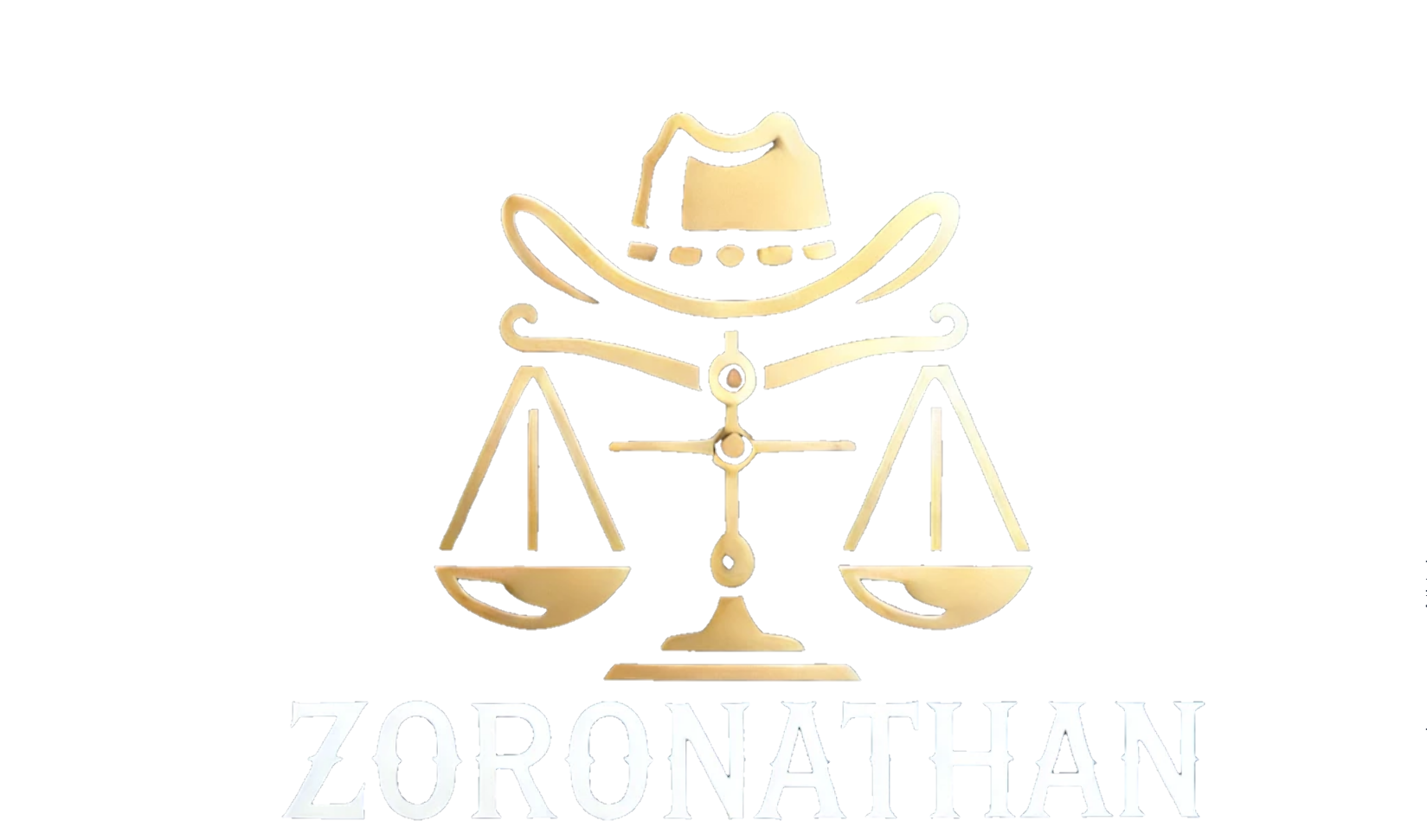Securing a position as a Big Law attorney in New York City represents a significant career achievement, often the culmination of years of rigorous academic pursuit and professional dedication. The allure of high salaries and prestigious clientele attracts top legal talent, fueling intense competition for these coveted roles. Understanding the average starting salary for these positions is crucial for aspiring lawyers, providing a benchmark against which to assess their career trajectory and compensation expectations. This exploration delves into the multifaceted factors that determine these salaries, examining data sources, influencing variables, and geographic nuances within the New York legal market.
This analysis considers the varied definitions of “Big Law” in New York, acknowledging the hierarchical structure within the industry and the impact of firm size and prestige on compensation. We’ll examine the influence of law school pedigree, academic performance, and specialized practice areas on starting salaries, providing a comprehensive overview of the financial landscape for entry-level Big Law attorneys in the state.
Defining “Big Law” in New York
The term “Big Law” in New York refers to a select group of elite law firms known for their immense size, prestigious clientele, and high-profile cases. These firms are typically characterized by their substantial revenue, large number of attorneys, and a reputation for excellence in legal practice. Understanding the nuances of this classification, however, requires a deeper look at the varying tiers within the New York Big Law landscape.
Defining the precise boundaries of “Big Law” can be somewhat fluid, but generally, firms with over 500 lawyers, significant global reach, and consistently high rankings in legal publications are considered to fall within this category. These firms often represent Fortune 500 companies, major financial institutions, and high-net-worth individuals in complex and high-stakes litigation and transactional matters. The prestige associated with these firms is a significant factor in attracting top legal talent.
Tiers within New York Big Law
While the largest firms command the most attention, New York’s Big Law ecosystem encompasses a range of firms with varying sizes and specializations, yet all maintaining a high level of prestige and demanding standards. The largest firms, such as Kirkland & Ellis, Skadden, Arps, Slate, Meagher & Flom, and Wachtell, Lipton, Rosen & Katz, are globally recognized powerhouses with extensive resources and a broad range of practice areas. They often handle the most complex and high-value transactions and litigation. Smaller, but still highly prestigious, firms like Paul, Weiss, Rifkind, Wharton & Garrison or Cravath, Swaine & Moore, may have fewer attorneys but maintain an equally strong reputation for excellence in specific practice areas, often attracting a similar caliber of clients and legal talent, albeit with a potentially more specialized focus.
Typical Practice Areas in New York Big Law
Big Law firms in New York boast a diverse range of practice areas, reflecting the city’s position as a global financial and legal hub. These areas frequently overlap and interrelate, creating opportunities for collaboration and specialization within the firm. Some of the most common include:
- Corporate Law: This encompasses mergers and acquisitions (M&A), securities regulation, private equity, and corporate governance. Big Law firms advise on some of the world’s largest and most complex transactions in these areas.
- Litigation: This involves representing clients in court proceedings, ranging from complex commercial disputes to high-stakes intellectual property litigation. New York’s Big Law firms are frequently involved in landmark cases that shape legal precedent.
- Real Estate: Given New York City’s dynamic real estate market, this is a significant area of practice, encompassing transactions, development, and financing.
- Financial Services: This area is crucial given New York’s status as a global financial center. Firms advise on regulatory compliance, securities offerings, and investment management.
- Tax: Big Law firms have dedicated tax practices advising clients on complex tax strategies and compliance matters.
Data Sources for Salary Information
Determining the average starting salary for entry-level attorneys in New York’s Big Law firms requires careful consideration of various data sources. Each source employs different methodologies, leading to potential variations in reported figures. Understanding these methodologies and their limitations is crucial for interpreting salary data accurately.
Several reputable sources provide salary information for legal professionals, each with its own strengths and weaknesses. These sources generally rely on surveys, compensation reports, and analyses of publicly available data. The accuracy and comprehensiveness of their findings depend on factors such as sample size, respondent participation rates, and the clarity of their data collection methods.
Reputable Sources of Salary Data
Several organizations and publications regularly collect and publish salary data relevant to Big Law attorneys. These include national and specialized legal publications, compensation consulting firms, and professional associations. These sources often use different methodologies, impacting the reliability and comparability of their findings.
For instance, some sources rely on self-reported salary data from attorneys, while others use a combination of self-reported data and data collected from firms. Self-reported data can be susceptible to biases, such as underreporting or overreporting of income. Sources that combine self-reported data with firm data often provide a more comprehensive and accurate picture, but obtaining such data can be challenging due to the confidential nature of compensation information.
Methodological Differences and Limitations
The methodologies employed by different sources vary significantly, influencing the reported salary figures. Some sources focus solely on entry-level salaries, while others provide broader compensation ranges for various experience levels. The sample size also varies considerably, with some surveys including hundreds of respondents, while others may rely on smaller, less representative samples.
Furthermore, the definition of “Big Law” itself can differ across sources, leading to inconsistencies in the data. Some sources may define Big Law based on firm size, while others may consider factors such as prestige, revenue, or client base. These variations can affect the overall salary figures reported. Finally, the timing of data collection is also important, as salary levels can fluctuate based on market conditions and economic trends. Data collected in a period of economic growth might show higher salaries than data collected during a recession.
Potential Biases in Salary Data
Several factors can introduce bias into reported salary data. For example, self-reported salary data may be influenced by social desirability bias, where respondents may underreport or overreport their income to align with perceived social norms. Furthermore, the selection bias inherent in survey participation can skew the results. Attorneys who are highly compensated or those with strong feelings about their compensation may be more likely to participate in salary surveys, leading to an overrepresentation of certain salary ranges.
Additionally, the methods used to weight and analyze the data can also influence the reported average salary. Different statistical techniques can yield different results, and the choice of method can sometimes be subjective. Finally, the way in which “entry-level” is defined can impact the data, as some firms may have more structured associate programs with distinct salary levels than others. The lack of standardization across sources regarding “entry-level” contributes to potential inaccuracies and inconsistencies in reported salaries.
Factors Influencing Starting Salaries
Several key factors significantly impact the starting salary of a Big Law attorney in New York. These factors are interconnected and often work in concert to determine an individual’s overall compensation package. Understanding these influences provides valuable insight into the competitive landscape of Big Law recruitment.
Law school prestige, academic performance, and prior experience are fundamental determinants of a starting salary. The reputation of the law school attended plays a considerable role, with graduates from top-tier institutions like Yale, Harvard, Columbia, and NYU generally commanding higher starting salaries than those from less prestigious schools. This is because these schools attract top students and often have strong alumni networks that facilitate lucrative job placements. Similarly, strong academic performance, reflected in a high GPA and class rank, significantly improves a candidate’s negotiating position. A candidate with a stellar academic record demonstrates a capacity for hard work, intellectual rigor, and achievement, making them a more attractive hire. Prior experience, particularly in prestigious firms or relevant fields, can also boost starting salaries. Internships at Big Law firms, clerkships for judges, or experience in government agencies or prominent corporations demonstrate a proven track record and can lead to higher offers.
Law School Prestige and Academic Performance
The impact of law school prestige and academic performance is often synergistic. A graduate from a top-tier school with a high GPA and class rank is likely to receive significantly higher offers than a graduate from a less prestigious school with lower grades. For instance, a graduate from Yale Law School with a 3.9 GPA and top 10% class rank might receive a starting salary substantially higher than a graduate from a lower-ranked school with a 3.5 GPA. This difference reflects the perceived value of the candidate’s skills and potential, based on the rigorous selection process and demanding curriculum of the higher-ranked institution.
Impact of Practice Areas
Specific practice areas within Big Law also significantly influence starting salaries. Highly specialized and in-demand areas, such as mergers and acquisitions (M&A), corporate finance, and intellectual property (IP) litigation, typically command higher salaries due to the complexity of the work, the high demand for skilled professionals, and the potential for significant financial returns for the firm. Conversely, areas like general litigation or personal injury may offer lower starting salaries, though this can vary widely depending on the firm and the specific experience of the candidate. For example, a starting associate in M&A might receive a significantly higher salary than an associate starting in real estate law, even if both individuals graduated from the same prestigious school with similar academic records.
Additional Compensation and Bonuses
Beyond base salary, additional compensation significantly impacts overall compensation packages. Bonuses are a common component of Big Law compensation, often tied to firm performance, individual contributions, and billable hours. These bonuses can substantially increase annual earnings, sometimes exceeding the base salary, particularly in profitable years. For example, a first-year associate might receive a base salary of $200,000 but also a year-end bonus of $50,000 or more, significantly increasing their total compensation. Other benefits, such as health insurance, retirement plans, and paid time off, also contribute to the overall value of the compensation package. These perks, while not directly impacting the starting salary figure, add significant value to the employment offer.
Salary Ranges and Distribution
Starting salaries for Big Law attorneys in New York City exhibit significant variation, influenced by factors like practice area, law school attended, academic performance, and individual firm compensation structures. While precise figures are often confidential, publicly available data and industry reports allow for a general understanding of salary ranges.
It’s crucial to remember that these salary ranges represent averages and may not reflect the compensation of every attorney. Many factors contribute to individual variations, making it difficult to pinpoint an exact salary for any given attorney. Furthermore, bonuses and other compensation components are often not included in reported starting salary figures.
Starting Salary Ranges by Practice Area
The following table provides estimated salary ranges for various practice areas within Big Law in New York City. Due to the confidential nature of compensation data, these figures are approximations based on available information from reputable sources such as legal recruiting firms and compensation surveys. Significant variations exist, even within a single practice area.
| Practice Area | Minimum Salary (USD) | Median Salary (USD) | Maximum Salary (USD) |
|---|---|---|---|
| Corporate (M&A, Securities) | 190,000 | 210,000 | 240,000 |
| Litigation (Commercial, White Collar) | 185,000 | 205,000 | 230,000 |
| Real Estate | 180,000 | 200,000 | 220,000 |
| Tax | 175,000 | 195,000 | 215,000 |
Note: These figures are estimates and may vary based on individual firm practices, associate performance, and market conditions. The actual salary received by a new associate may fall above or below these ranges.
Geographic Variations within New York
While the term “Big Law” generally evokes images of Manhattan skyscrapers, the reality of starting salaries for Big Law attorneys in New York extends beyond the city limits. Significant salary discrepancies exist between New York City and other regions of the state, reflecting differences in cost of living, market demand, and the concentration of major law firms.
Geographic variations in starting salaries for Big Law attorneys in New York are primarily driven by the concentration of major law firms and the corresponding demand for legal services. New York City, particularly Manhattan, boasts the highest concentration of these firms, leading to intense competition for top talent and consequently, higher salaries. Conversely, smaller cities and towns within the state have fewer Big Law opportunities, resulting in a less competitive market and generally lower starting salaries. Furthermore, the significantly higher cost of living in New York City, especially Manhattan, necessitates higher compensation to attract and retain qualified candidates.
Manhattan versus Other Boroughs
Salary expectations for starting Big Law attorneys differ considerably between Manhattan and the other boroughs of New York City. Manhattan firms consistently offer the highest starting salaries, often exceeding those in Brooklyn, Queens, the Bronx, and Staten Island by a substantial margin. This disparity is attributed to the higher concentration of prestigious and high-paying firms in Manhattan, the intense competition for associates in this central business district, and the significantly higher cost of living compared to the outer boroughs. For instance, a starting salary in Manhattan might reach $200,000 or more, while a comparable position in another borough could start at $180,000 or less, reflecting the market forces at play.
Comparison with Other Legal Markets
New York’s Big Law starting salaries often serve as a benchmark for the legal profession, but a comprehensive understanding requires comparing them to other prominent legal markets. Significant differences exist in average starting compensation across these markets, driven by a complex interplay of factors. Examining these variations offers valuable insight into the broader legal job market and its regional nuances.
The average starting salary for Big Law associates in New York City significantly surpasses those in many other major legal markets. This disparity isn’t simply a matter of cost of living; other factors, such as the concentration of high-paying clients, the intensity of competition among firms, and the sheer volume of legal work in the city, all play crucial roles.
Key Differences in Starting Salaries and Contributing Factors
The following points highlight the key distinctions in starting salaries and the underlying reasons for these differences across various major legal markets. While precise figures fluctuate annually, the relative positions generally remain consistent.
- New York City: Commands the highest starting salaries due to its concentration of Fortune 500 companies, major financial institutions, and a high volume of complex litigation and transactional work. The intense competition among firms for top talent further inflates salaries.
- Los Angeles: While Los Angeles boasts a substantial legal market, its starting salaries typically fall below New York City’s. This is partly due to a slightly lower concentration of high-paying clients in certain practice areas, and a somewhat less intense competition for associates, though still very competitive.
- Chicago: Chicago’s Big Law market offers competitive starting salaries, but generally lower than New York City. A strong corporate and litigation presence contributes to relatively high compensation, but it lacks the sheer density and concentration of high-paying clients found in New York.
- Washington, D.C.: Washington, D.C., presents a unique market. While starting salaries are generally competitive, they may vary significantly depending on the practice area. Government regulation and lobbying work can command high salaries, but other areas might not reach New York City’s levels. The influence of government contracts and regulatory work introduces a different dynamic than purely private sector driven markets.
Illustrative Case Studies (Hypothetical)
This section presents two hypothetical examples of entry-level attorney compensation packages in New York City’s Big Law firms, highlighting the potential variations based on factors such as law school prestige and practice area. These examples are for illustrative purposes only and should not be considered definitive representations of actual salaries.
Compensation Package: Elite Law School Graduate
This hypothetical example focuses on Anya Sharma, a recent graduate of Yale Law School, who secured a position in the mergers and acquisitions (M&A) group of a prestigious New York City Big Law firm. Her compensation package reflects the highly competitive nature of this practice area and the firm’s reputation.
Anya’s base salary is $215,000 per year. Her bonus structure is performance-based, with a potential bonus of up to 40% of her base salary, depending on the firm’s profitability and her individual contributions to successful deals. This means she could earn an additional $86,000 in a successful year. Benefits include comprehensive health insurance (medical, dental, vision), a generous 401(k) matching program (up to 7% of her salary), paid time off (including vacation, sick leave, and holidays), and a substantial contribution towards her student loan repayment. She also receives a yearly professional development stipend for continuing legal education courses and conferences.
Compensation Package: Less Prestigious Law School Graduate
This example focuses on Ben Carter, a recent graduate from a well-regarded but less prestigious law school, who accepted a position in the litigation department of a mid-sized Big Law firm in New York City. His compensation package reflects the realities of a less specialized practice area and a firm with a slightly different compensation structure.
Ben’s base salary is $190,000 per year. His bonus structure is also performance-based but capped at 25% of his base salary, totaling $47,500. His benefits package is similar to Anya’s, including comprehensive health insurance, a 401(k) matching program (5% of his salary), paid time off, and access to professional development opportunities, although the contributions may be slightly lower. His firm does not offer a student loan repayment assistance program.
Comparison of Compensation Packages
The difference between Anya and Ben’s compensation packages highlights the significant impact of law school prestige and practice area on starting salaries in Big Law. Anya’s higher base salary, significantly larger bonus potential, and additional benefits like student loan repayment assistance reflect the premium placed on graduates from elite law schools and the high demand for M&A lawyers. Ben’s package, while still substantial, demonstrates that starting salaries can vary considerably based on factors beyond individual performance. The difference in bonus potential is also significant, reflecting the higher profitability often associated with M&A practice compared to litigation. These variations illustrate the complex interplay of factors that determine compensation in the competitive world of Big Law in New York City.
Ending Remarks
The average starting salary for a Big Law attorney in New York is a complex figure, influenced by a multitude of factors extending beyond simple experience and education. While substantial salaries are common, aspiring lawyers should understand the nuances of firm prestige, practice area, and geographic location. This analysis highlights the importance of thorough research and realistic expectations when navigating this competitive and rewarding legal landscape. Ultimately, the journey to a successful Big Law career requires more than just a high starting salary; it demands dedication, skill, and strategic career planning.
FAQ Summary
What are the typical benefits offered alongside starting salaries?
Benefits packages vary by firm but commonly include health insurance, retirement plans (401k matching), paid time off, and professional development opportunities.
How important is networking in securing a Big Law position in NYC?
Networking is extremely valuable. Attending legal events, informational interviews, and leveraging alumni networks can significantly increase your chances.
Are there opportunities for lateral entry into Big Law firms?
Yes, lateral moves are possible, particularly for attorneys with specialized experience or a strong track record in a specific practice area. However, competition remains high.
What is the typical bonus structure for Big Law attorneys in NYC?
Bonus structures vary greatly, often depending on firm performance, individual contributions, and the practice area. They can range from a small percentage of the base salary to a significant additional amount.




